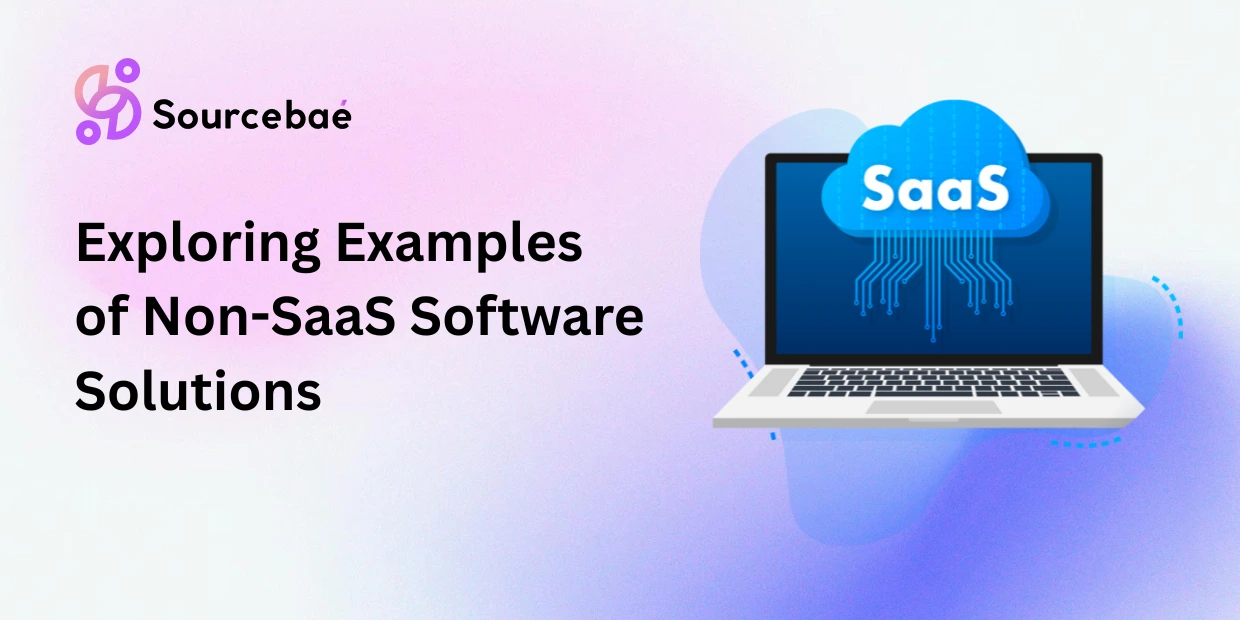In today’s rapidly evolving tech landscape, Software as a Service (SaaS) has become a dominant force. However, it’s crucial to recognize that not all software solutions fall under the SaaS umbrella. In this article, we’ll delve into the world of Non-SaaS Software Solutions, exploring various examples that illustrate the diversity and importance of these alternatives.
In today’s digital era, software plays a pivotal role in various aspects of our lives. Software as a Service (SaaS) has gained immense popularity, offering cloud-based, subscription-oriented solutions. However, SaaS is just one piece of the software puzzle. This article will shed light on non-SaaS software alternatives, highlighting their significance and providing examples to help you better understand their role in the tech ecosystem.
Before diving into non-SaaS software, let’s briefly clarify what SaaS entails. Software as a Service refers to a cloud-based model where software is hosted remotely and accessed via the internet. Users subscribe to SaaS applications, enjoying the benefits of automatic updates and accessibility from any device with an internet connection.
Types of Non-SaaS Software
On-Premises Software
On-premises software is installed and operated from a user’s in-house server or computer. It does not rely on external servers or cloud platforms. Users typically purchase licenses and host the software themselves, allowing for more control and customization.
Open-Source Software
Open-source software is a collaborative effort where the source code is made available to the public for use, modification, and distribution. Examples include the Linux operating system and the web browser Mozilla Firefox. Open-source software fosters innovation and community-driven development.
Freeware
Freeware refers to software that is free to use, often with no time limitations. Developers offer these programs at no cost, relying on other revenue sources like advertisements or premium versions with added features. A notable example is the antivirus software AVG.
Shareware
Shareware allows users to try software before purchasing it. They often have limited features in the trial version, with the option to unlock full functionality through payment. WinRAR, a popular file compression tool, is a prime example of shareware.
Check out: How does SaaS differ from traditional software models
Examples of Non-SaaS Software
Now, let’s explore some concrete examples of non-SaaS software:
Microsoft Office Suite
Microsoft Office, including applications like Word, Excel, and PowerPoint, is a classic example of on-premises software. Users install it on their local machines, and the software operates without the need for constant internet connectivity.
Adobe Creative Suite
Adobe’s Creative Suite, featuring Photoshop, Illustrator, and InDesign, falls under the category of non-SaaS software. Graphic designers and creative professionals rely on these tools, often using them offline for complex design projects.
AutoCAD
AutoCAD is a popular choice for engineers and architects. This computer-aided design (CAD) software is installed locally, allowing professionals to create intricate designs and blueprints.
GIMP (GNU Image Manipulation Program)
GIMP, an open-source image editing software, offers a free alternative to Adobe Photoshop. Users can download and use GIMP without incurring any costs, and it provides powerful image editing capabilities.
WinZip
WinZip is a shareware application used for compressing and decompressing files. It offers a trial period with basic functionality and the option to purchase a license for full access.
Advantages of Non-SaaS Software
Non-SaaS software solutions come with several advantages:
- Control: Users have greater control over the software’s functionality and data.
- Customization: On-premises and open-source software can be tailored to specific needs.
- Offline Access: Many non-SaaS options work without internet connectivity.
Disadvantages of Non-SaaS Software
However, there are some drawbacks to consider:
- Initial Cost: On-premises software often requires a substantial upfront investment.
- Maintenance: Users are responsible for updates, security, and maintenance.
- Limited Collaboration: Non-SaaS software may hinder collaboration compared to cloud-based solutions.
FAQs
What is the main difference between SaaS and non-SaaS software?
SaaS software is hosted in the cloud and accessed via the internet, while non-SaaS software is installed locally or based on open-source/free models.
Are non-SaaS software solutions cost-effective?
It depends on the software and your usage. Some non-SaaS options are cost-effective in the long run, while others may require significant upfront investments.
Can I use non-SaaS software offline?
Yes, many non-SaaS software solutions can be used offline, making them suitable for various scenarios.
Is open-source software safe to use?
Open-source software can be safe, but it’s essential to download it from reputable sources and keep it updated for security reasons.
What factors should I consider when choosing between SaaS and non-SaaS software?
Consider factors like cost, customization needs, internet connectivity, and collaboration requirements when making your decision.
Conclusion
In conclusion, non-SaaS software encompasses a diverse range of solutions, each with its own merits and drawbacks. Understanding these alternatives is essential for making informed decisions in the ever-evolving tech world. Whether you opt for on-premises, open-source, freeware, or shareware software, the choice should align with your specific needs and preferences.






